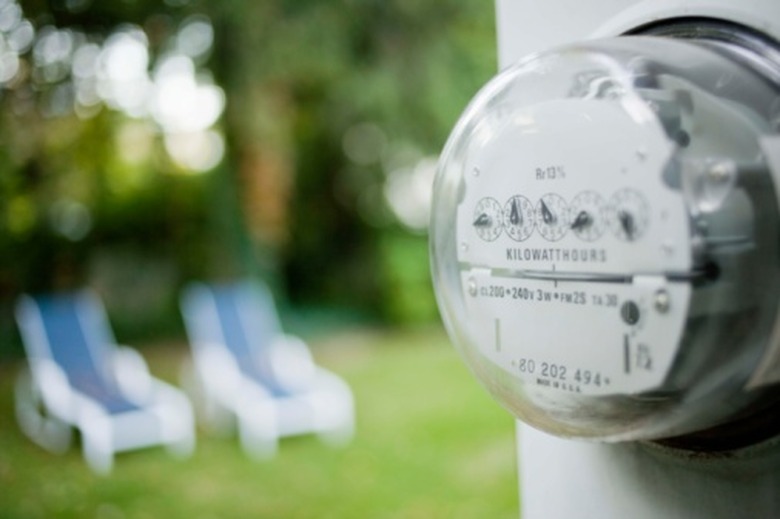How To Test The Accuracy Of An Electric Meter
Things Needed
-
Pen
-
Paper
-
Calculator
Electric meters record how much electricity you use in your home and are used to calculate how much you need to pay for the electricity your electrical appliances have consumed. Electric meters are generally accurate and can be tested by your electricity supplier. However, if you find your electricity consumption has increased above what you expected, then it's fairly straightforward to test the accuracy of the meter yourself before calling your electricity supplier.
Step 1
Select an electrical appliance that consumes a constant and reasonable amount of electricity so you can test the accuracy of your electric meter. A fan heater or other electric heater is ideal. Turn the thermostat to the highest setting.
Step 2
Read the label on the appliance you have selected to determine the wattage it uses. For example, an electric heater may use 2,000 watts per hour on its highest setting and this corresponds to the way your electric meter measures electricity as you pay for electricity based upon kilowatt-hours. Write down the wattage.
Step 3
Turn off all electrical appliances in your home before testing the accuracy of the electric meter. Double-check that every electrical item is turned off. Read the electric meter and write down the reading next to the wattage you wrote down from your selected electrical appliance.
Step 4
Turn on the selected electrical appliance and make an accurate note of the time you turned it on. Leave the appliance operating for exactly 30 minutes. Turn off the appliance.
Step 5
Read the electric meter reading again. Write down the reading.
Step 6
Subtract the second meter reading from the first reading. This tells you the wattage consumed during the 30 minutes your appliance was turned on. The reading should equal half the wattage you wrote down from the label on your appliance, if your meter is accurate. For example, if you wrote down 2,000 watts, which equals 2 kilowatts per hour, your meter reading increases by 1,000, or 1 kilowatt, so the figure you got following your subtraction is 1,000. If the figure is different by more than about 5 percent, have your meter tested professionally.
Step 7
Turn on the electrical appliances you turned off, such as the fridge and freezer.
Tip
If the appliance you choose to use to measure electrical consumption shows amperes, covert to wattage by multiplying the amperes by 110; this is the electrical voltage in your home. Amperes multiplied by voltage equals watts.
Warning
Turning off all electrical appliances means fridges and freezers stop operating, so make sure you don't open the doors while you are testing your electric meter.
